Affiliate disclosure: This post may contain affiliate links. Please see our Privacy Policy.
Red clover is an edible and medicinal wildflower that grows nearly everywhere. You’ll see it popping up in lawns, woods edges and open fields, where it’s bright pink blooms attact pollinators and wildlife alike.
Humans can also make use of this incredible edible wild weed for both food and medicine.
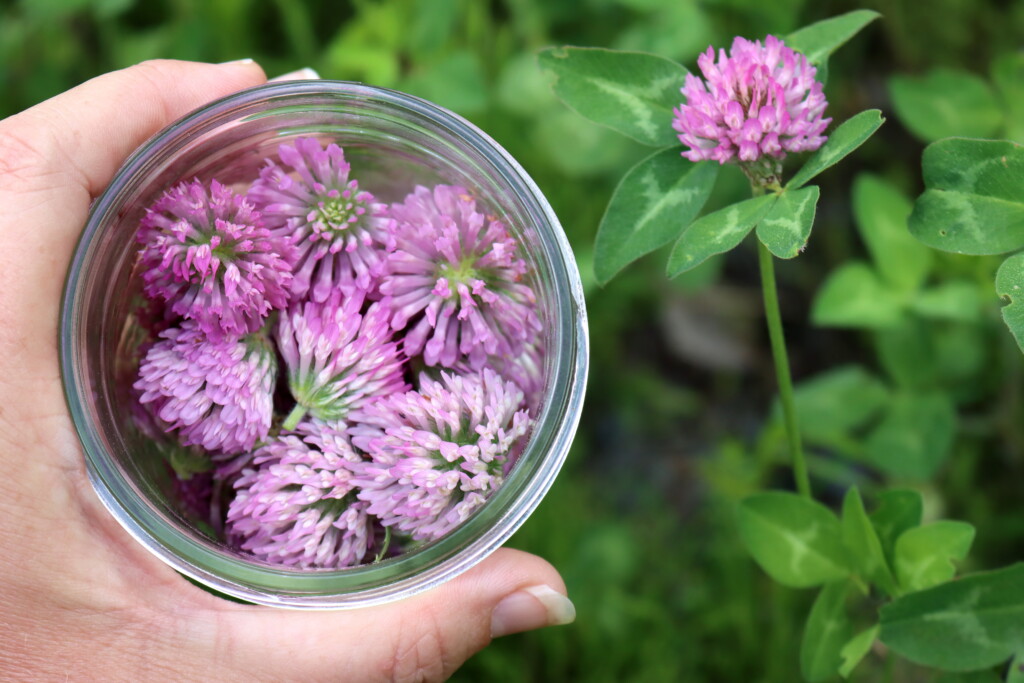
Early on in my foraging days, I took a weed walk with a local well-known forager. I learned some of my very first mushrooms that day, but the most interesting finds were plants I already knew.
Red clover grows just about everywhere on my homestead, and while I knew it was medicinal, I had no idea that it is also a valuable wild food source.
Our foraging guide looked at the group and said, “Who remembers eating red clover as a child?”
About 2/3rds of the group raised their hand, but I wasn’t among them. There were few wild plants in my childhood, growing up in the desert of Southern California.
The only plant I remember from my childhood is pineapple weed because it would sprout right out of the cracks in the asphalt playground at my elementary school. There’s no stopping that one.
Red clover likes ample water to grow, and while I’d occasionally see patches of white clover in lawns growing up, but the only exposure I’d had to red clover was watching Thumper take big bites of it in the movie Bambi.
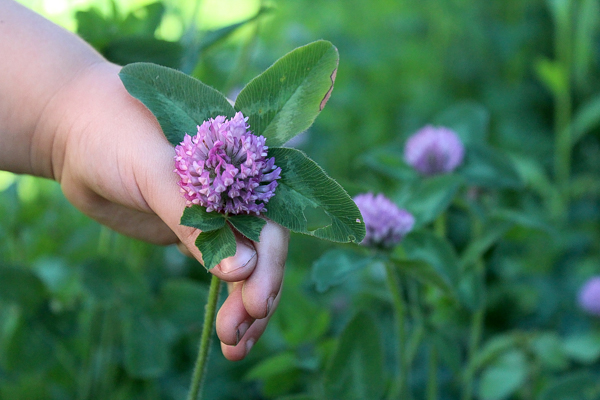
Each red clover flower has a drop of sweet nectar that you can eat by carefully removing the flower from the stem. That attachment point will put out a drop of honeydew, and apparently, it’s loved by children in the Northeast.
I missed out on this one as a child, but I gave it a try and it is in fact quite sweet. There’s very little to “eat” but you do get a drop of sugar on your tongue.
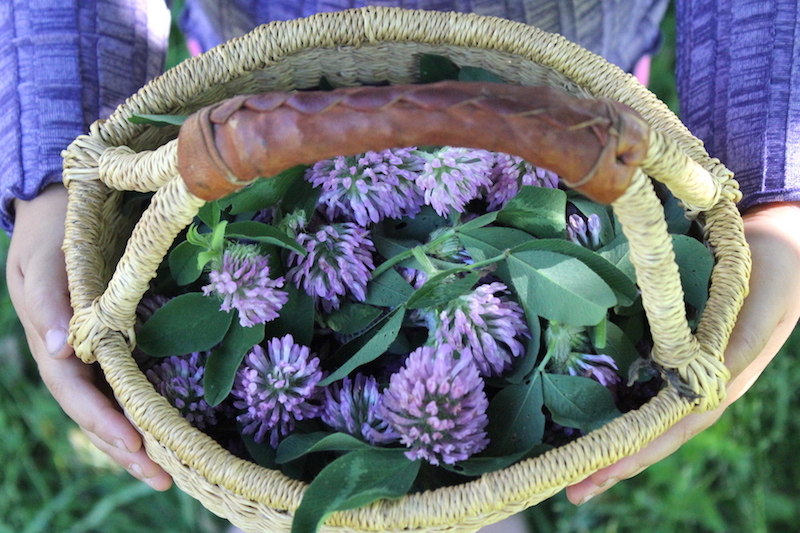
What is Red Clover?
Red Clover (Trifolium pratense) is an herbaceous, short-lived perennial plant in the Fabaceae or Legume family. You may hear it called Purple Clover, Wild Clover, Three-Leafed Grass, Trefoil, Meadow Trefoil, or Bee Bread.
Red Clover is native to Europe, Western Asia, and Northwest Africa but has naturalized worldwide. It’s widely cultivated, typically as a fodder crop for livestock or a garden cover crop. Occasionally, it’s grown as an ornamental.
Is Red Clover Edible?
Yes, Red Clover is edible in its entirety. You can eat the roots, stems, leaves, blossoms, and seeds. Most foragers use Red Clover raw, but you can also cook it as a potherb or in baked goods.
Herbalists often employ Red Clover in medicinal applications, and it can be safely used internally or externally to treat a wide range of conditions.
Red Clover is also a safe and healthy livestock fodder and a good pollen source for bees.
Red Clover is believed to have mild estrogenic effects because it, like most legumes, contains isoflavones. Due to this feature, some sources recommend that people who are pregnant, breastfeeding, or have had or have breast cancer don’t take Red Clover before consulting with a physician.
Red Clover Medicinal Benefits
Medicinal Uses of Red Clover
Beyond its use as a tasty edible flower, clover is also medicinal.
Nutritionally, red clover is an excellent supplement because it contains high levels of important minerals and vitamins, including calcium, beta-carotene, vitamins C and B, thiamine, magnesium, and potassium.
Red Clover is also a rich source of isoflavones, chemicals that act like estrogens and are found in many plants. Due to its isoflavone content, herbalists often employ Red Clover to treat menopausal symptoms, including mood swings, hot flashes, and night sweats.
Peer-reviewed studies have shown that red clover is a potent herb for balancing hormones, especially in menopausal women. It reduces menopausal symptoms and can help with other hormonal imbalances including anxiety and depression.
Additionally, Red Clover may be a good herb to increase fertility, reduce menstrual cramps, and increase milk production. However, it should be noted that Red Clover has not proven to be definitively safe for breastfeeding and pregnant women.
Indian traditional medicine practices also frequently use Red Clover, believing it to have anti-inflammatory, anti-spasmodic, deobstruent, sedative, expectorant, and anti-dermatitis properties.
Over the course of centuries, herbalists worldwide used Red Clover to treat a wide range of ailments, including cancer, rashes, eczema, psoriasis, osteoporosis, gout, high cholesterol, asthma, and coughs, including whopping cough.
Though it isn’t common practice in the US, some herbalists also smoke red clover as a tobacco alternative finding it to help relieve stress.
Many of these uses have been further validated by modern research. A recent review looked at 80 studies focused on Red Clover. The reviewers found studies that indicated that Red Clover improved cardiovascular symptoms, reduced the symptoms of menopause, and displayed antioxidant and anticancer effects.
Indeed, a 2020 study looking at cancer in female mice found that combining Red Clover with doxorubicin, a chemotherapy drug, helped suppress tumor growth and significantly increased the survival rate of the mice.
A previous study completed in 2006 also looked at Red Clover’s effects on reducing bone loss after menopause. The study involved rats who were given ovariectomies to simulate menopause. It found that rats treated with Red Clover isoflavones displayed “significantly increased bone mineral content, mechanical strength of the tibia, femoral weight, femoral density and prevented the rise of serum alkaline phosphatase levels.” These findings support herbalists’ use of Red Clover for reducing osteoporosis.
Another scientific review focused on studies that looked at Red Clover and menopause symptoms. The review found that the studies indicated that patients given Red Clover did display some reduction in the frequency of hot flashes. However, researchers also noted that further, well-designed studies are needed to confirm and understand these findings.
The herb has expectorant and antispasmodic properties, which means that red clover can help with coughs and lung issues. Red clover is calming and acts as a mild sedative, which is great for colds and flu.
Where to Find Red Clover
While Red Clover was originally native to Europe, Western Asia, and Northwest Africa, you can now find it worldwide. You may spot Red Clover growing in pastures, hay fields, gardens, vacant lots, degraded prairie remnants, waste areas, and along roadsides.
Red Clover thrives in areas with full sun but tolerates partial shade and adapts to a wide range of soil types. It prefers soils with good drainage and fine or medium texture. Red Clover will tolerate low fertility, moderately acidic soils, and drought once it’s established.
When to Find Red Clover
Red Clover is a perennial and is present in some form year-round. While it may die back to the roots or almost to the roots in northern winters, some foliage may be present through the winter in warmer, southern climates.
In many areas, Red Clover puts on good growth in early spring and begins to bloom in April. However, in the far north, it typically doesn’t bloom until May or even early June. Red Clover will bloom through the summer, continuing into October in some areas.
Identifying Red Clover
As the Latin genus name, “Trifolium,” suggests, Red Clover features the classic, trifoliate leaves of the clover family, with each leaf having three leaflets. It’s large for a clover, and its size and height help distinguish it from other species. That said, it’s easiest to spot when in bloom. You may notice its cheerful, round pink blooms even from a distance.
Red Clover Leaves
Red Clover features hairy, alternately arranged trifoliate (composed of three leaflets) leaves. The leaflets are green and variegated with a whitish or pale green chevron near the center. The leaflets are oval to ovate and broader in the center. They typically range from 0.6 to 1.2 inches in length.
Each compound leaf is attached to the main stem by a petiole, usually ranging from 0.4 to 1.6 inches long. At the base of many leaves are a pair of basal stipules or leaflet-like appendages that narrow to a point.
Red Clover Stems
Red Clover stems typically grow between 8 and 31 inches tall. They’re round, green, hollow, and branching and have some fine hairs.
Red Clover Flowers
Red Clover blooms from spring until fall, often from April to May, depending on the weather. It typically has many flowerheads on branching stems.
The flowers are usually dark, rosy pink but may be paler towards the base. The flowers are round inflorescences about 0.5 to 1 inch long and wide, composed of numerous tiny tubular flowers that point outward in different directions. Each flower has five petals that are pink or purplish pink near the top and paler toward the base.

Red Clover Seeds
After blooming, Red Clover produces tiny irregular, sometimes mitten-shaped seeds in shades of yellow, brown, red, and purple.
Red Clover Root
Red Clover has an extensive root system with smaller fibrous roots and a slender taproot that may penetrate several feet into the soil.
Red Clover Look-Alikes
Red clover is pretty easy to identify, the only plants it’s commonly confused with are other edible species of clover, namely white clover and crimson clover.

Red Clover is sometimes mistaken for the closely related Crimson Clover (Trifolium incarnatum). However, Crimson Clover differs in several noticeable ways:
- Crimson Clover is smaller, growing about 8 to 20 inches tall.
- Crimson Clover stems are unbranched or branched only at the base.
- Crimson Clover leaflets are widely obovate to obcordate.
- Crimson Clover flowers are rich red or crimson.
- Crimson Clover flowers are elongated spikes rather than round inflorescences.
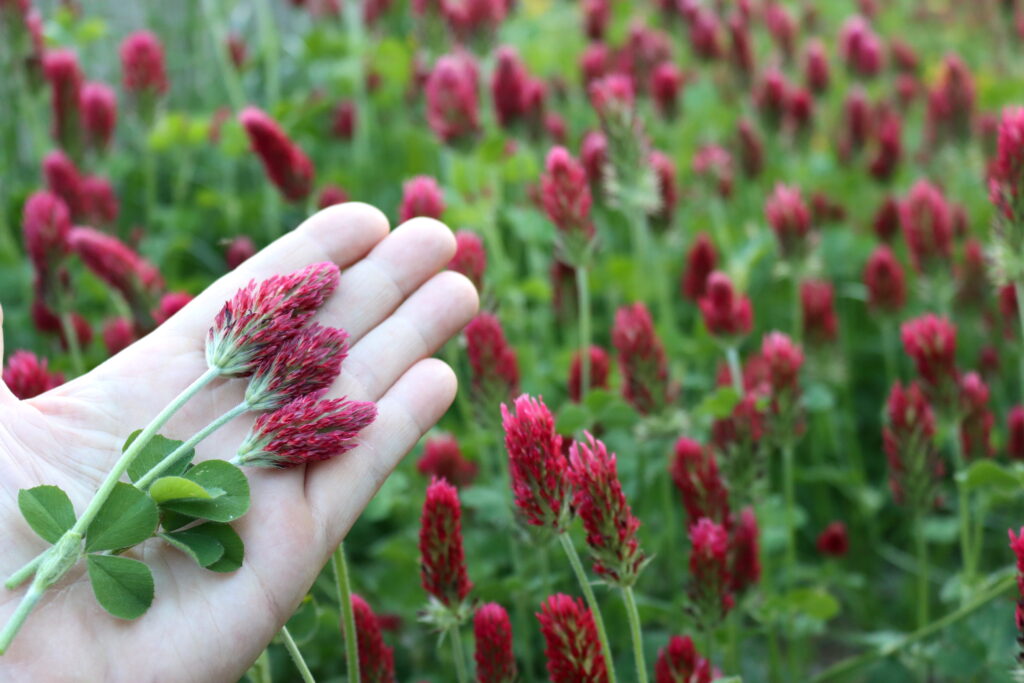
Red Clover may also be confused with White Clover (Trifolium repens), especially before they have flowered. However, you can easily distinguish the two with the following characteristics:
- White Clover is low-growing and typically reaches just 8 to 12 inches tall.
- White Clover stems function as stolons and often run along the ground, forming creeping mats and rooting at the nodes.
- White Clover usually has rounded leaflets.
- White Clover has smaller white to very light pink flowers that may be up to 0.75 inches long and wide.
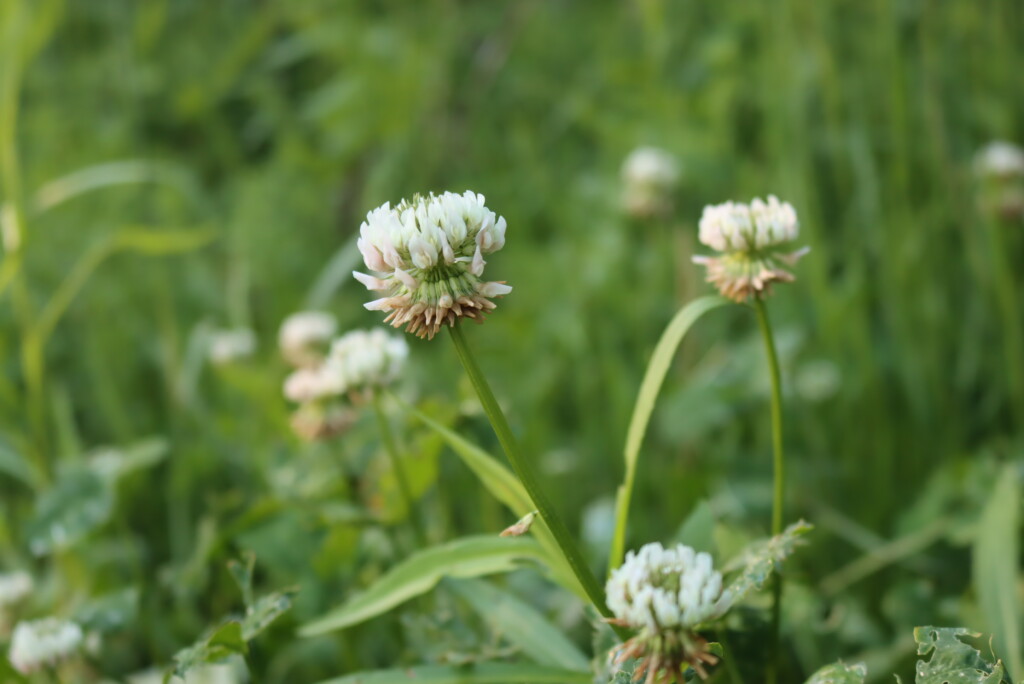
Ways to Use Red Clover
Red Clover is one of the easiest wild herbs to incorporate in the kitchen. Its mild flavor and cheerful pink blossoms easily lend it to many recipes. You can use it raw in garnishes and salads, cooked with other greens as a potherb, or mixed into baked goods for a little wild color and flavor. Foragers also commonly use the blossoms to create flavorful jellies, syrups, and candy.
Red Clover is a potent medicinal herb high in essential vitamins and minerals. For quick use, make tea with Red Clover blossoms. It’s tastier than many herbal teas, and you can serve it hot or iced. To preserve blossoms for later use, you can dry them for teas or tincture them.
If you’re dealing with skin issues like rashes, psoriasis, or eczema, you may also want to try using Red Clover externally. It’s an excellent herb for crafting soothing ointments, salves, and infused oils.
Medicinally, red clover is usually taken as either a tea or a tincture. Make a tea with a few tablespoons of dried blossoms to a cup of water, and enjoy several times per day.
As a red clover tincture, take 1/2 to 1 teaspoon three times per day. That’s about 100 drops or 3 to 6 droppers full per day.
Red clover tincture can be made by submerging blossoms in a neutral alcohol and waiting about 6 weeks. You can also purchase ready-made tincture here.
Many commercial tincture preparations are made alcohol-free because red clover is often used in treating children. Traditional medicinals markets a red clover tea to “support healthy skin” and “promote good mood.”
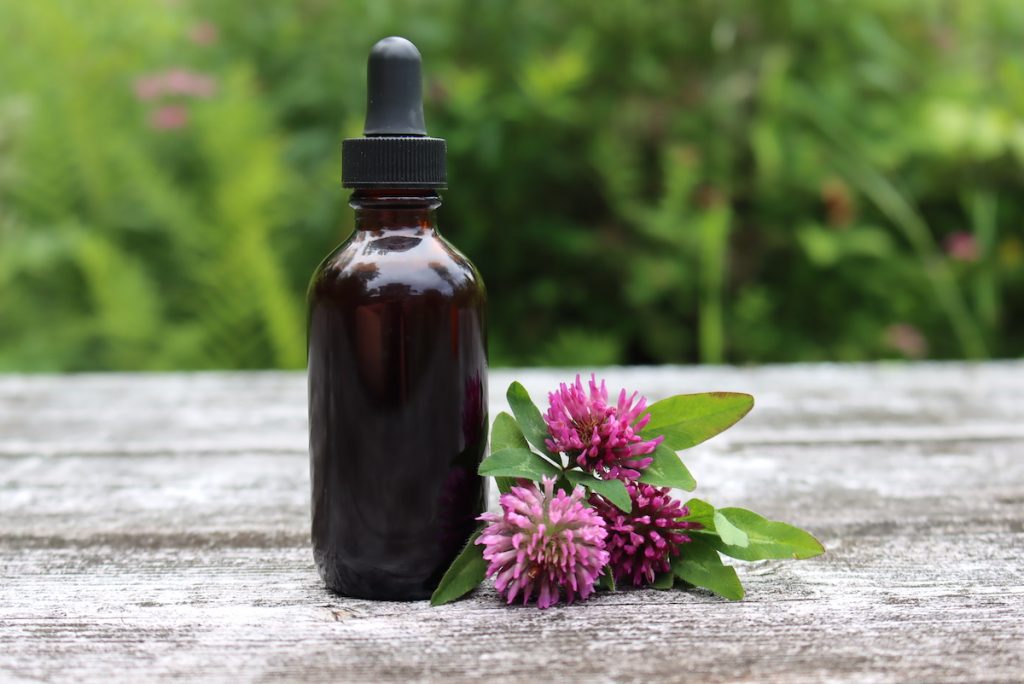
How to Make Red Clover Flour
If you want real survival sustenance, red clover nectar isn’t going to cut it. The flowers have more than just that drop to give though. If dried and then ground, red clover flowers make a highly nutritious red clover flour.
For every 8 cups of flowering tops harvested, you can produce about 1 cup of ground flour. To understand the whole process, read through this post on how to make clover flower flour.
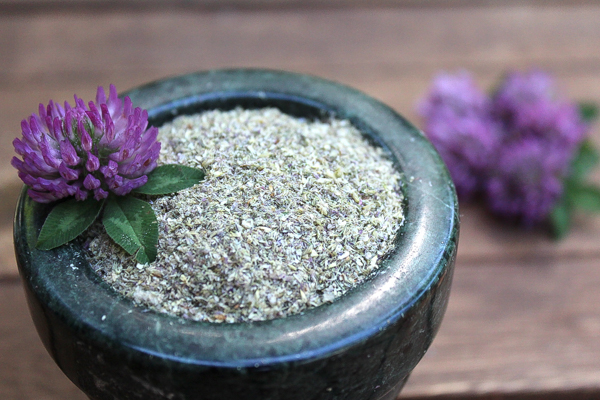
Red Clover Recipes
- Red Clover leaves and blossoms are excellent tossed in with salads, but you can also take it one step further with this Red Clover Vinegar Salad Dressing from Edible Cape Cod.
- If you’re up for an adventure, Try making these stunning Blue Crab Buns with Clover from the Wondersmith.
- Preserve those sweet pink blossoms for winter with this Clover Blossom Jelly canning recipe from Creative Canning.
- Nourish your skin with this easy recipe for Red Clover Oil from Simply Beyond Herbs.
- Serve a delicious snack or appetizer with this Wild Tabbouleh recipe from Permacrafters that uses both the leaves and flowers.
- Be sure to check out our Wild Foraged Clover Flour recipe and start making incredible clover baked goods.
- Looking for a tasty summer sun tea recipe? Try this Red Clover Honeysuckle tea from Hillsborough Homesteading.
- Not a tea person? You can still make a tasty summer beverage with this Red Clover Lemonade recipe from New Life on a Homestead.
Wild Lawn Weeds
Looking for other ways to use the wild weeds in your lawn?
As you venture into the world of foraging red clover, you might be surprised by the variety of other edible weeds that can be found right in your own backyard. One of the most versatile and well-known is the dandelion. Not only can its leaves be added to salads, but the flowers can be made into dandelion wine, and the roots can be roasted as a dandelion root coffee substitute.
Beyond dandelions, there are many other tasty and nutritious options. Purslane, for instance, is packed with antioxidants and omega-3 fatty acids, making it a great addition to salads. Chickweed is another common weed that’s rich in vitamins and can be used in pesto or as a healing salve.
If you’re interested in exploring more of what your lawn has to offer, consider checking out our articles on wild violets and mallow, both of which are not only edible but also offer medicinal benefits. Wild violets can be used to make infused vinegar or soap, while mallow leaves can thicken soups and stews.
Whether you’re looking to enhance your salads or create natural remedies, there’s a wealth of possibilities right outside your door!
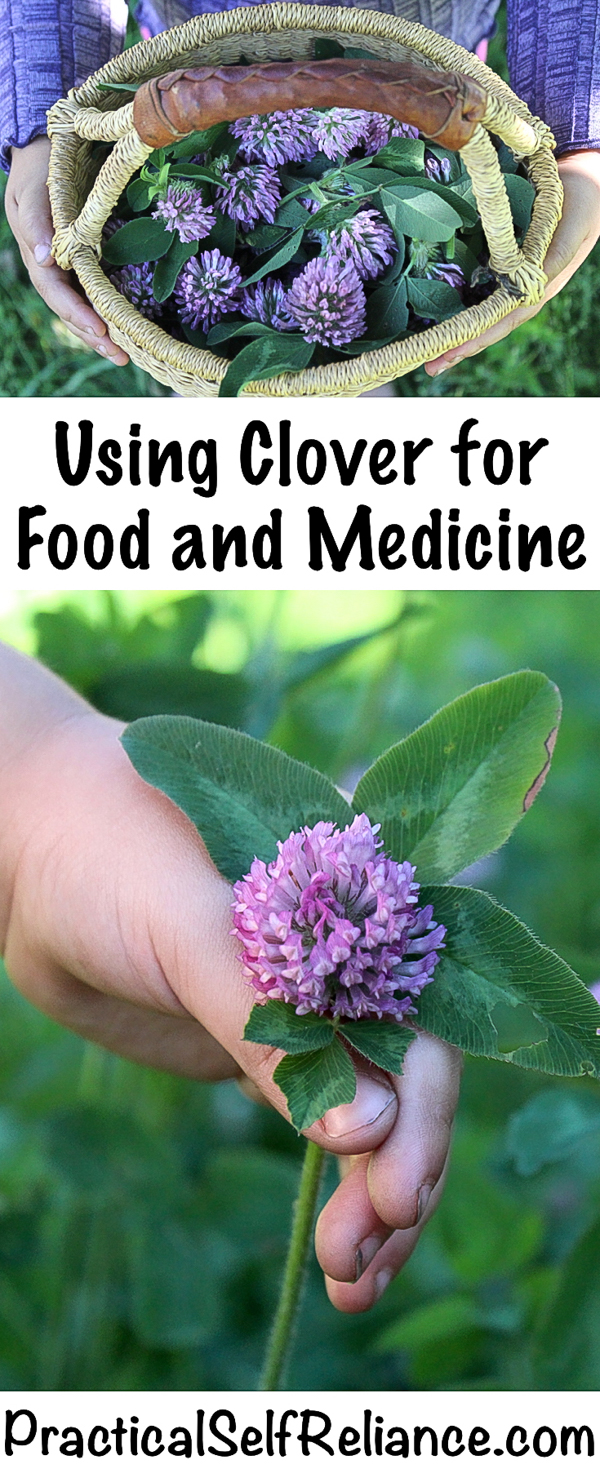
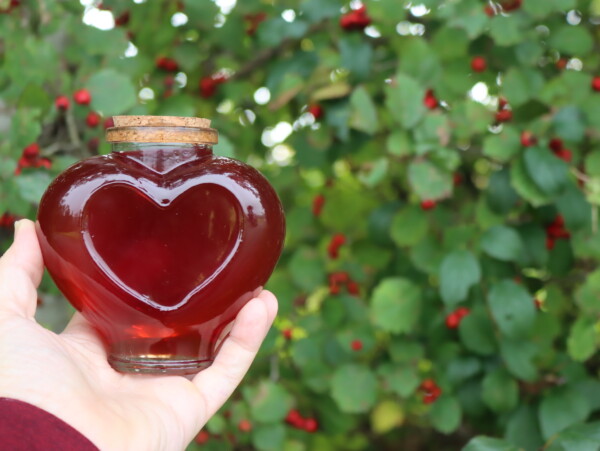
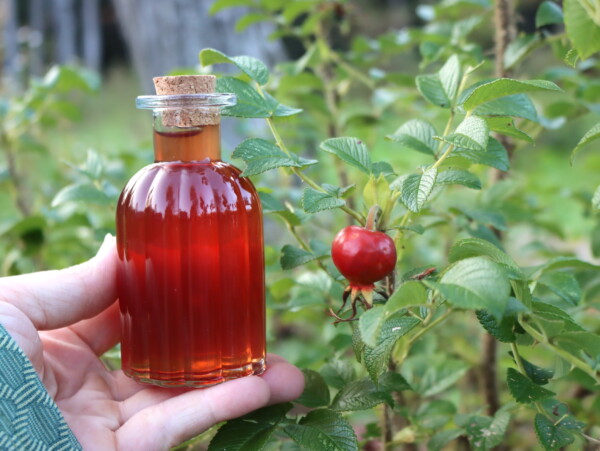
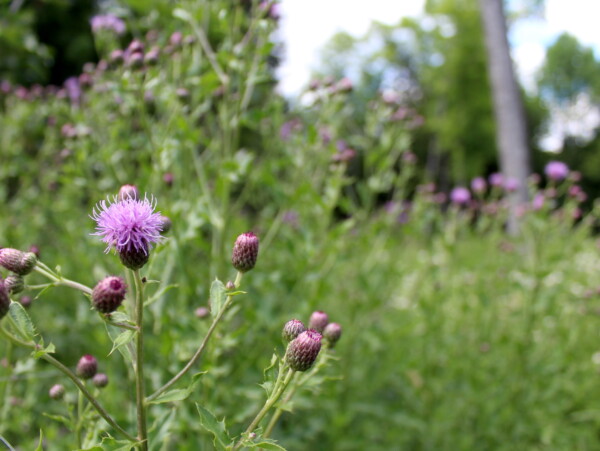
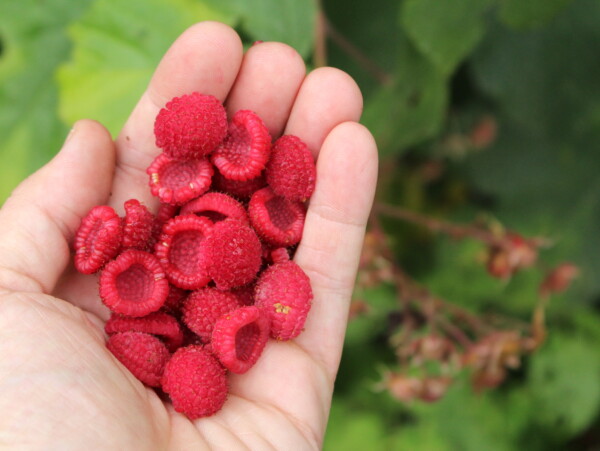
How long after picking can you still eat the flowers? I had a bowel cover in fridge for 2 weeks. It still looks good and tastes ok..
I would think that if it’s in the fridge and it still looks ok and tastes ok, then you should be fine.
I love that idea the farmers here grow files of this stuff I always used it in my garden it fertilizes my veggies just turn it over after season is over and voila
Very good instructions and photos. Can you use white clover in the same way? We have lots of it.
Yup, white clover works just as well.
Do you remove petals from red clover to store and use?
very informative and plainly put